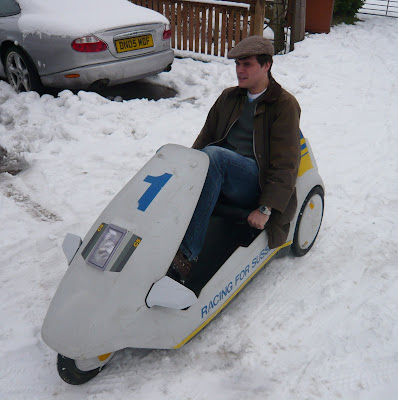
Back in 1985, an eccentric British engineer, Clive Sinclair, introduced to the public what he thought would revolutionise transportation. Already a multi-millionaire thanks to his digital calculator in the 70’s and hugely successful ZX Spectrum computer, which had made home computing accessible and affordable for the masses, he ploughed nearly £12 million of his own money into producing the Sinclair C5. After a disastrous launch - the one-seater, open-air trike was introduced to an unimpressed media audience during the depths of a wet winter - sales were predictably slow. There was also a glaring issue in that the C5 was too big for pavements and too small for the road; a passing lorry would often show up the inherent vulnerability of the vehicle and attracted the venom of safety campaigners. Sales soon tailed off and thousands of unsold C5’s were evidence enough for production to be abruptly stopped. After losing his investment, Clive Sinclair went back to computers, eventually selling the Sinclair brand to Alan Sugar’s AMSTRAD company.
Many of these C5’s ended up languishing at the back of garages or sheds as people lost interest in them. This is where Bright World Director, James Foster found one when he attended a friend’s garage sale. Covered in dust and electrically dead, it seemed like an interesting project to bring back to life for James, who is a secret engineering geek. To James’ surprise, a growing number of C5 enthusiasts were out there – one electronics expert and C5 wizard lived less than half an hour away and was able to recondition the C5’s electronic modules and motor very cheaply. Indeed he states, ‘I have always wanted to have a classic car - I suppose you might possibly class it as one - but do not have the garage space. At least I don’t have nightmares about restoration costs!’ James’ C5 is now fully operational and a familiar buzz can be heard around Hurstpierpoint as he commutes into work – weather permitting!
